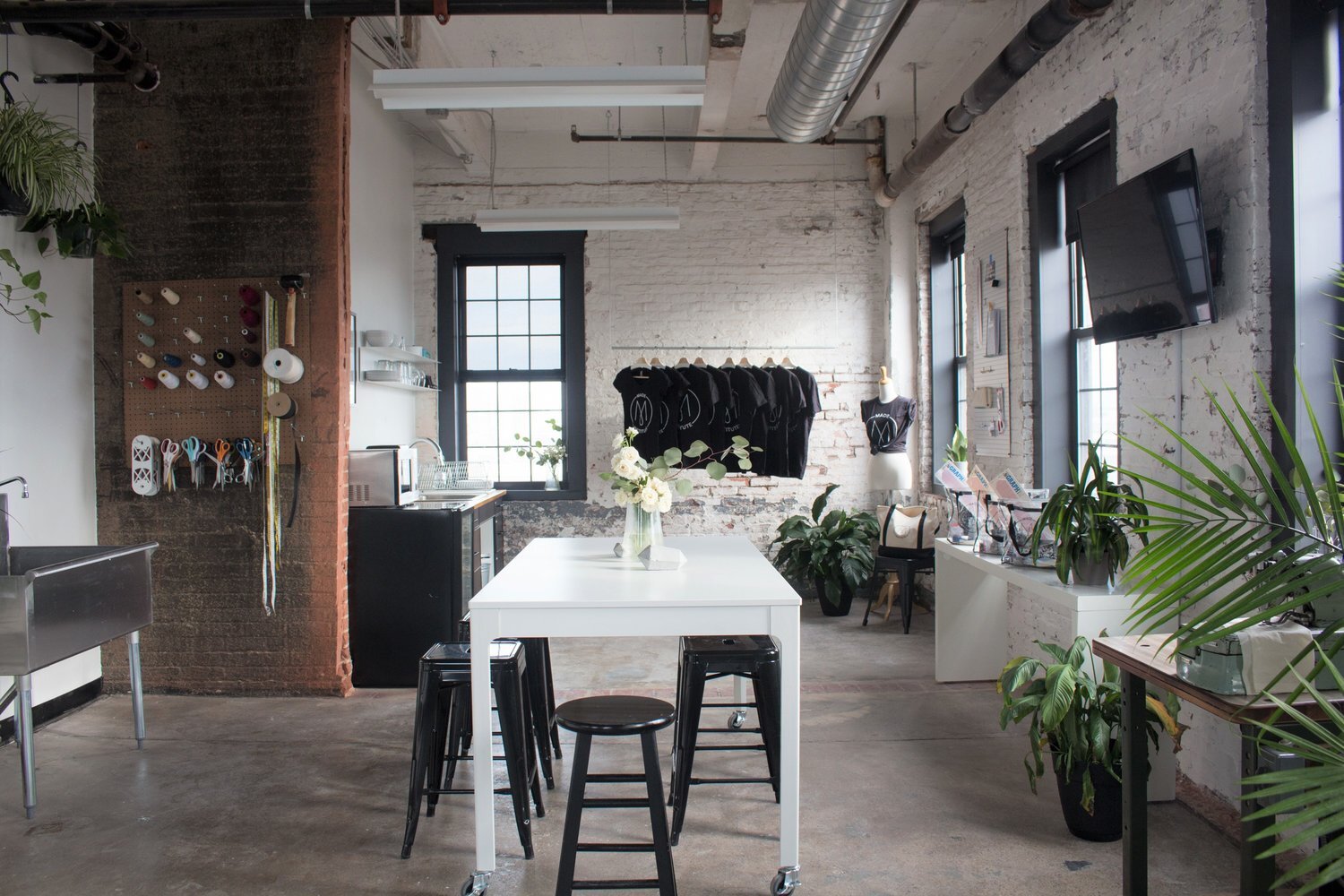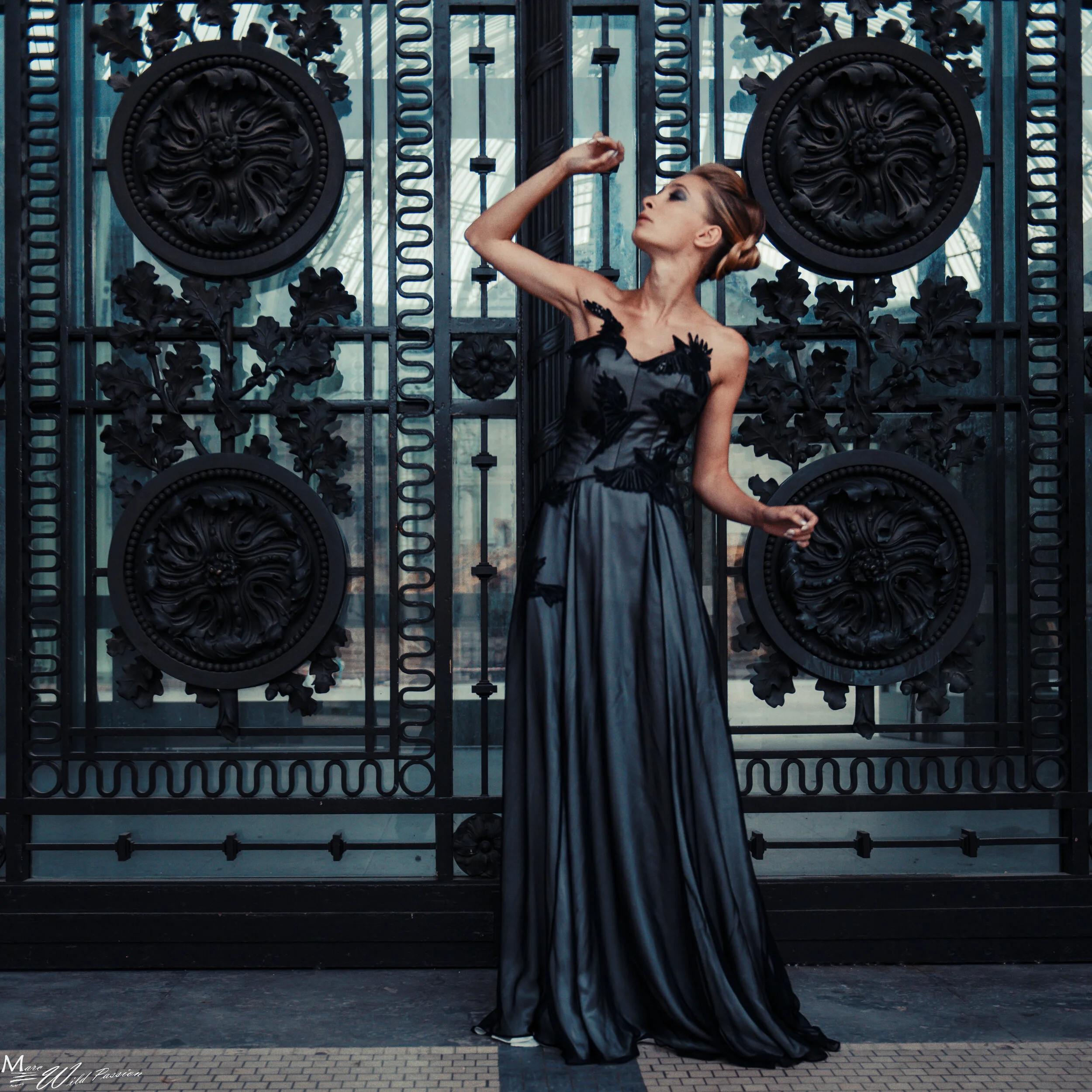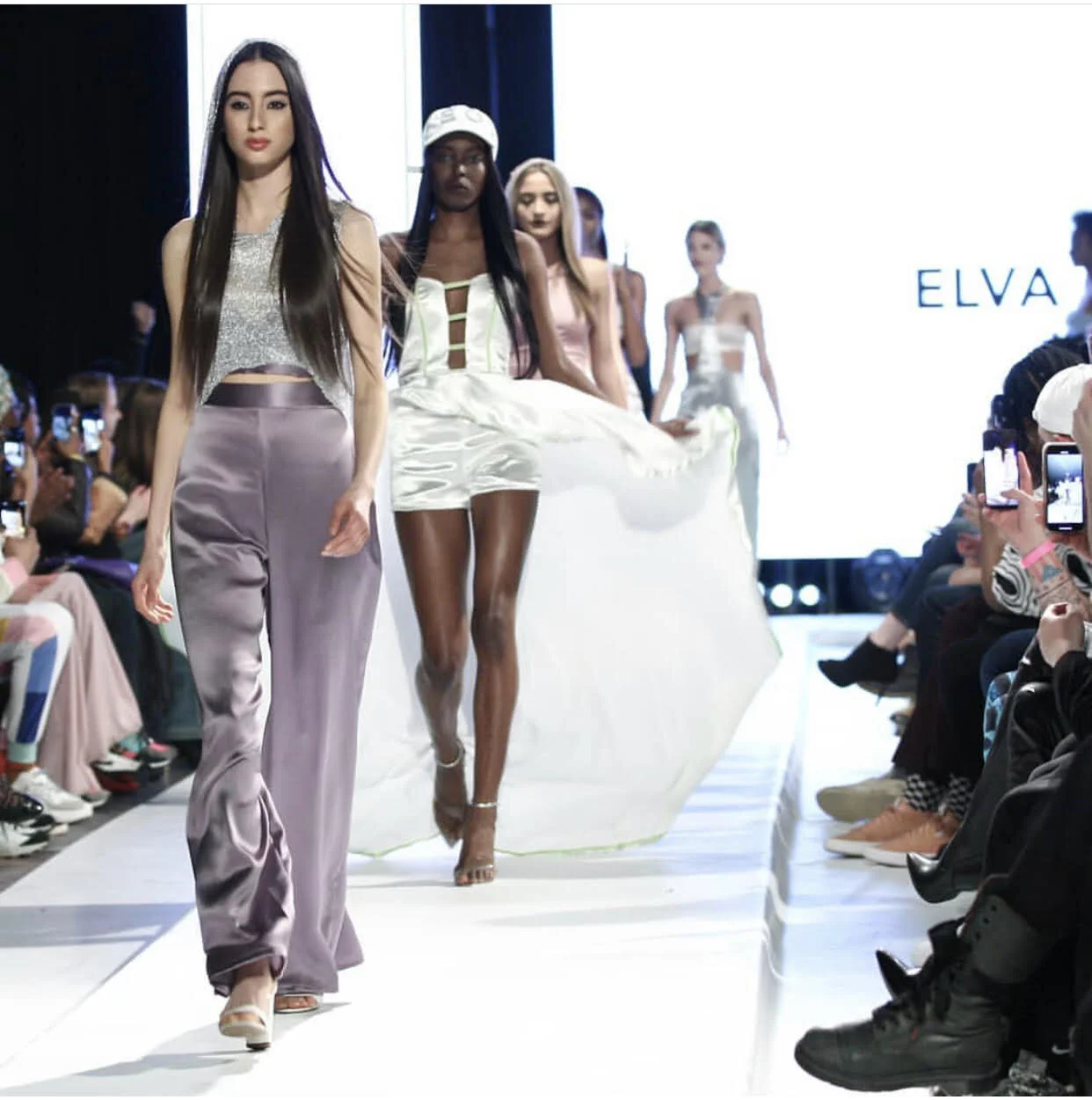
Fashioning Futures: From Corporate to Couture to starting my own Fashion School.
Rachel Ford shares the fascinating story of her path through the industry which led to her founding Philadelphia’s premier independent design school, Made Institute.
Rachel Ford, founder and creator of Made Institute (Philadelphia's premier independent design school), has gone through many transitions throughout her career. After studying fashion design at Drexel University in Philadelphia, and a stint in commercial design at Free People, she made the jump into making costumes, and a 10 year career at the Philadelphia Opera atelier - before starting Made.
She shares her incredible story full of the highs, lows and steep learning curves that come with evolving through the industry, and launching a business guided by her vision for a more accessible route into fashion.
Philadelphia center city | Photo by Ethan Hoover on Unsplash
Hi Rachel! So what first drew you into the world of fashion?
So I was that kid who knew they wanted to be a Fashion designer probably from the age of 11 or 12 years old (that was also when I first started to sew). This was during the 90s, which was this really lovely time in fashion where everything was so exotic, and supermodels ruled the industry.
I’d see magazines full of models and celebrities in these lavish gowns - I LOVED that feeling of drama, and thought, ‘I want to make that!’
Tell us a little more about your first job as a fashion designer at Free People:
After graduating from Drexel University, I got my first interview at Free People through a friend who was already working there. She basically put my resume on the right desk, and I was hired as an intern. It really helps to know somebody when applying for a job like that!
When I first arrived my whole department was actually away traveling on factory visits and shopping trips. So I was thrown into an empty department, with my only instructions coming from Meg Hayne (now CEO of Free People). At the time she was the Creative Director - I had no idea how important she was. My first task was organizing the color bins, but I didn't care, I was just so happy to be there! Eventually Meg came into the office and asked me to design a whole collection to show to Macys. She gave me a prompt and a week to get it done.
I didn’t have supplies or a budget - I also didn't know how to present it, and that they only wanted sketches. So I hand-made the entire collection! I went to the salvation army, bought old curtains and started tea dying the fabric, turning it into cute tops and pants.
The morning of the presentation Meg knocks on the door, and she’s like “What is this?". I reply “It’s the collection”. With a look of shock on her face she said, “Honey you made it?!”. I thought that was what she wanted. She laughed and said “alright bring it out, let’s see what you did!”
I just assumed I was fired, but I presented each piece to Meg and the Macy’s team - they loved it! Most of my collection was approved and ended up in the stores. I was hired into a full time position as Design Assistant.
Unfortunately when my immediate boss returned from traveling and heard what happened, she was furious - that collection was her job! Without corporate experience I didn’t really understand about staying in my lane. She didn’t like me from the start, which was definitely not the ideal introduction to a boss - especially with the politics in this industry. From then on she hid me away as much as she could.
Why did you eventually end up leaving?
I stayed there for only a year. It was a weird time… My best friend, also a design student, was battling cancer. We both loved Anthropologie and Free People, so this job was really like OUR dream job.
At one point I had been invited to travel on a shopping trip with my boss. Before I left I warned all of the managers that my friend was close to dying, and if anything happened to her I'd have to leave early to attend her funeral. We made it as far as Copenhagen when I received word that my friend had passed away. Up to that point my boss and I were getting along surprisingly well. I called her from my room to tell her what happened. Her response - “you better not think you’re leaving this trip”. She needed me to talk to the factories since I had been the one entering all the information in our system, and she didn’t know what to say. My response was simply “I am”.
It’s easy to lose yourself in a job you’ve already worked so hard for, but that moment was when I realized this was maybe not what I wanted.
After I managed to get home, I had a couple of days off for the funeral before I had to return to work. When I got back to the office there were so many terrible rumors spreading - some people thought I’d made it up, or that I was afraid of traveling or that I got sent home. I was like OK, this is not a culture I want to work in. I gave my two weeks notice. When I left I knew it was the right thing - for me, corporate fashion just wasn’t the right fit.
I did learn a lot of essential things from that job - like tech packs, how corporate fashion works, and how to keep my emotions and fears in check.
After a year at Free People, you drastically shifted your career path when you joined the Philadelphia Opera atelier. Many would say those two worlds couldn't be more different! How did this opportunity come about?
Rachel’s Design, Photographed in Paris
Photographed by: Marc Lamey Model:Alex
I had been thinking a lot about my final collection in design school at Drexel. My designs were almost like costumes - very theatrical and opulent. So after leaving Free People I thought, ‘What is the opposite of corporate fashion?’ and ‘What do I miss from my time at Drexel?' Maybe I can do costume design!
I started researching jobs in this area - from movies, to theatre to music videos. It opened up a world I hadn’t even thought of before. Through a friend of a friend I was able to get my first job in the arts at a children’s theatre in Philadelphia. My position as a stitcher involved a lot of problem solving - I loved the creativity, realness and authenticity of this new world.
At the children’s theater I ended up working on several projects with the Creative Director of Opera Costume - making costumes for the adults while learning customization and couture techniques. One day he came in with an emergency. “It’s opening night at the opera and one of the actresses just dropped out. We need to make 2 gowns by tonight. How do you feel about making silk chiffon dresses?” And I replied with, “That’s my thing! I actually know how to do that!”
Obviously I was terrified, but I wasn’t going to say no. He took me over to the Opera costume shop and introduced me to this woman called Nel, who would eventually be my mentor. She is a genius pattern maker -so I learned a lot just watching her work. We had a short space of time to make these incredibly intricate gowns. She just said, ‘make yours like mine’, and we got to work.
The Creative Director came back at 6pm not long before showtime. He saw the two dresses we had made and couldn't tell which one was mine! And so his response was, “Honey do you want a job?”
I obviously said yes! I still get chills thinking about this moment. And so that was how I began at the opera.
“At the Opera I also learned how you should always surround yourself with people who know more than you.”
For those who aren't as familiar with the world of costume design, what was your day to day role at the atelier, and what did you love most about it?
Every time there was a new opera coming in (there were about 6-8 a year), the costume department would come in and we would basically stare at the actors bodies. I know this sounds kind of creepy, but since everyone carries weight in different places, it was an important step for us to create perfect fitting costumes. We would then go back to the shop and pad out the dress form. The whole process was almost like creating a sculpture.
Once the dress forms were padded out, we would start draping. That was my favorite part! We’d finish with a final fitting of the actors and actresses, who would have to give final approval of their costumes. It was often high pressure, but the end results were so stunning and rewarding. I also learned a lot about working with different body shapes and sizes.
Your career at the atelier spanned 10 years, what important lessons did you learn that still resonate with you today?
I learnt to never let fear stop you from doing something you know you can do. My proudest accomplishments in my life were the things that scared the hell out of me. At the Opera I also learned how you should always surround yourself with people who know more than you.
Another key lesson was how important it is to get your ego out of the way. I feel really lucky that I had the insight at an early age to get over myself and put myself in a position of constant learning. That would be my big takeaway from the Opera.
You were also teaching at Moore school during your time at the Opera, tell us about your experience there and how that led to your next venture.
I started teaching at Moore College of Art at first just to see if it was something I wanted to pursue. I had never taught anything before, but they had a listing for an advanced sewing teacher. I brought in some of the lavish gowns I had made to show them, and I was hired!
Their advanced sewing class was actually pretty basic. I realized there wasn’t anyone else in the city actually teaching high level corsetry and couture, so I asked the school about adding a class. Unfortunately they didn’t feel it fit their customer. My students however, gave me feedback they had interest furthering their learnings in these areas. So I got the OK to teach my own corsetry classes independent to them, in my apartment.
How was the initial concept of Made Institute born?
I was still working at the opera and teaching at Moore at the time - and I also just decided to start these little weekend corsetry classes. I remember the first student who signed up through a craigslist ad I had posted. The ad had a little blurry picture of a corset alongside it - it was so bad! But when they bought the course I was like oh my god! And that was the beginning of Made!
Originally I called it “Made in Philadelphia.” I charged $800 for the course - enough to cover my materials and rent. At first it was just me and that first student. I had my industrial sewing machine and dress form, and I taught her how to make a corset. She told her friends, and they told their friends, and it just started spreading because there was nothing quite like it around.
Eventually people started asking for other courses, like business classes. Some people came to me because they always secretly wanted to become fashion designers but didn’t know how to transition their lives. They had normal day jobs and were doing fashion as a weekend hobby.
The energy was so organic and natural. There was no business plan or funding. Anytime someone would sign up for a class, I would buy a machine and a dress form - so I wasn’t making money from it, but I was building something.
‘As an entrepreneur once you start seeing your ideas come to life, it becomes this fire you want to keep burning’.
As Made was growing, what were the challenges you faced keeping up with it's rapid growth?
As Made grew it started taking over my beautiful studio apartment. Eventually my landlord said I couldn’t hold classes there anymore, so I took the leap to renting commercial space. With the course signups I had just enough money for the first and last month security deposit. But I couldn’t afford my apartment too - so I ended up living in the commercial space at the back of the building.
Made Institute Student Collection @elvaolive
With funding cuts to the arts during the 2008 recession, a lot of my colleagues in the opera were looking for work. I hired a couple of them as teachers and added a variety of courses. After moving into my gorgeous little commercial space we officially became “Made Studio”.
While still aimed at hobbyists, we were edging towards a proper curriculum. From the moment I put up the craigslist ad I had visions of my dream studio based around community, support, creativity and collaboration where people felt safe to create. Every step was going further towards that vision. A lot of people thought I was crazy however I realized I was onto something here.
Getting licensed as a real school was a huge process but it was what I needed to validate that my crazy idea was not so crazy. As an entrepreneur once you start seeing your ideas come to life it becomes this fire you keep wanting to burn. I didn’t start Made with any investors money, we’ve never had any debt or had to borrow and I own 100% of my company which as a woman is so kick ass.
People have asked me “who were your investors, your father or your husband?” They want to believe that you didn’t do it yourself. I had my company way before I met my husband, and he's been hugely helpful as he’s also a lawyer but it was my school which had stemmed from everything I had learned at the opera. That’s what makes Made so special and different because I came from a place of respect for the craft.
Do you believe Made still embodies the same ideology you began with?
The core fundamentals are still there. It’s very much about hands-on learning and community development building. I think because we’ve grown, we’ve had to figure out how to scale while keeping our ethos intact which is hard. However we have the belief that fashion education can be something that's accessible and real - not about how much money you have, who your parents are or who you know.
Image from one of Made’s Classes
Do you have any advice for someone considering changing their career path or starting a business?
Don’t dive into something just because you think it’s a good business idea. Choose something you are truly passionate about and love doing. A lot of people have this “Instagram view” of being a boss with their laptop, a cup of coffee and a nice plant in a beautiful apartment - but for most that’s not the reality of it. Starting a business is going to be really hard work that just isn’t for everyone.
Question yourself - why is it that you want to start your own business? Is it because you want to be free to travel anywhere? Do you want to make a lot of money? Or do you want to make a social impact and change the world? By first figuring out your primary goal you can ensure you’re building something that gives you the life you really want. Otherwise you’ll burn out.
Learning time management is crucial, especially if you’ll be working another job in the beginning. Having a mentor or a friend that checks in with your progress helps a lot to stay on task.
Don’t get discouraged by people who don’t believe in you. If they don’t see what you’re seeing don’t give up - stick to your guns and block out what everyone else is doing. Keep your head in your work, and eventually you will rise to the top.
Thank you Rachel!
Visit Made Institute for online and in-person classes at
By Emma Golley
Check ‘em out.
If you’re interested in furthering your Fashion skills, check out the Made Institute website for details on their online classes and studio classes.







